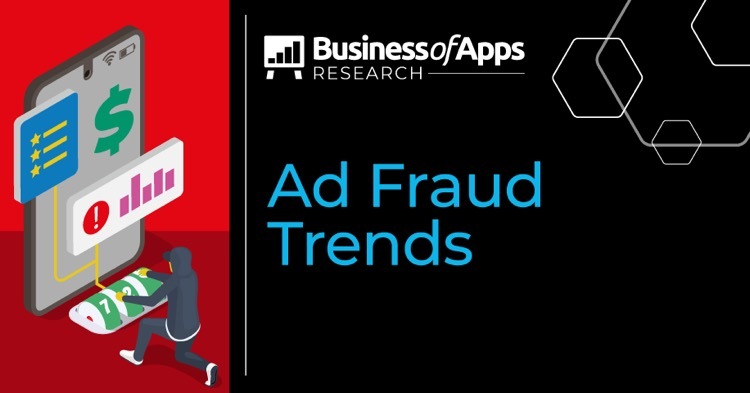Whenever money is involved, there is always an opportunity for fraud. From a technical perspective, online advertising fraud has been a relatively easy (and yes – lucrative) business for fraudsters and a financial disaster for advertisers, publishers and online ad platforms themselves. Online ad business was built on a number of Internet Open Standard technologies which were never meant to be fraud / scam / steal proof. As a consequence, ad fraudsters got a huge head start. According to Juniper, in 2019 online advertising industry was facing a stunning $42 billion loss due to ad fraud and unfortunately, there isn’t any reason to believe the figure will be less this year.
We want to help brands to get a picture of what online advertising fraud will look like in 2020 and invest smartly into anti-fraud systems and partner with online industry leaders in ad fraud detection, mitigation, and prevention.
Featured Ad Fraud Prevention Tools
And so here’s what our experts had to say on online advertising fraud trends in 2020. There are several common trends that were mentioned frequently:
- Applying a holistic approach of combating ad fraud across multiple channels will become more prominent
- Making ad fraud financially unsustainable via developing and applying more sophisticated click validation standards will help to prevent ad fraud
- InApp ad fraud will continue to be a key challenge
Online Advertising Fraud Prevention Thought Leaders

“Fraudsters will combine their highly specialized skills in 2020, attacking the whole marketing funnel and further evading detection. Over the course of our fraud detection journey, we have come across different types of fraud behavior in different markets and channels. From non-viewable ads to nonexistent installs, from ads shown in unwanted publishers to organic hijacking. We even detected fraudsters who are able to manipulate store (Google Play and App Store) numbers with unidentified techniques. It seems that each fraudster is sophisticated in a unique type of mechanism.
For example, some are focusing on branding campaigns, by inflating the numbers of highly viewable ads. Some are focusing on hijacking organic installs of performance marketers. We expect fraudsters to combine their technological capabilities in order to manipulate the whole marketing funnel of advertisers from impression to in-app engagement. Eventually, we predict ad fraud to increase in evasiveness. Thus, ad fraud prevention in 2020 will require a holistic approach by combining different metrics including viewability, IVT detection, install verification and also in-app bot detection.
Utilizing your company resources effectively by outsourcing ad fraud prevention to the experts. Brand marketers and UA managers already have highly involved roles. It makes little sense to expect them to tackle ad fraud in addition to their daily duties. Companies, especially those focusing on digital advertising need to outsource to individuals whose daily role revolves around scrutinizing marketing data from an ad fraud perspective. Those professionals will use ad fraud prevention tools and work closely with marketing teams. They will further optimize and filter marketing channels and help marketing teams to build a combined marketing stack to automate all efforts effectively.”

“While detection can’t be used as a standalone solution to ad fraud, it is a great way to identify and research new types of fraud. We cannot fight what we can’t see – so it stands to reason that fraud prevention always has to begin with fraud detection. Fraudsters are extremely skilled, and are constantly developing new ways to spoof advertisers. The only sure way to deter fraudsters is to make it financially unsustainable for them. In 2020, we’ll continue to invest in our fraud prevention technology, focusing on the data points that are hardest to fake.
In 2020, we’ll see more focus on impression and click, and how the link between the two is essential to fighting fraud. A user can only click on an ad if they have actually been served and seen it. That sounds like common sense, but all too often, these clicks aren’t made by real users. That’s why Adjust created the Click Validation standard earlier this year, which requires ad channels send impressions with a unique identifier that will also be attached to any resulting clicks before the click claim is sent. This dramatically increases the workload for fraudsters, to the point where it becomes financially unviable for them.
Though there are always new exploits being developed by fraudsters, that doesn’t mean the underlying systems vary. Knowing the limitations of these systems, and that new methods of ad fraud can only develop within these parameters, makes it easier to apply solutions. At the moment, Click Injection and Click Spam are two of the most pervasive methods of ad fraud, currently accounting for 43% and 30% of all ad fraud respectively. It’s likely we’ll continue to see them being used against unprotected apps in 2020. That makes measures like the Click Validation requirement all the more important, because it dramatically increases the workload for fraudsters seeking to steal brands’ and advertisers’ ad budgets.”

“More fraudulent traffic is originating from individual devices, generated by malware. This means fraud prevention needs to be able to differentiate between human and bot traffic on the same advice. This type of traffic easily circumvents blacklists and is only sometimes picked up by rules and thresholds. Distinguishing genuine ad engagements from fraud is going to rely on building intelligence around the reputations and profiles of devices, IPs, apps, traffic sources and domains and understanding the interconnected nature of these objects. The effectiveness of this effort comes down to building this intelligence over time and having the capability to leverage it for real-time validation. Moving into 2020, this type of granular, machine learning driven fraud detection will be essential.
More mobile app advertisers need to verify attribution. For app campaigns, fraudsters take aim at the MMP’s attribution function because ultimately, tricking the MMP leads to the fraudster getting paid. Independent fraud prevention plays a critical role in verifying attribution and stopping ad fraud.
A lot of credence is paid to the fraudsters’ ability to develop new types of fraud, but in reality they are able to make a lot of money with very rudimentary techniques and slight adaptations. For example, we are seeing much more click spam generated by malware on devices rather than servers. The principle is the same – high volumes of clicks are sent to the campaign in the hope that the MMP will misattribute an install/conversion to the source of the fraudulent click. However, the execution has changed to help it circumvent their fraud detection mechanisms. Likewise, the rising popularity of re-engagement campaigns aiming to bring dormant users back to apps, is another avenue to give click spam another bite of ad budgets. Fraudsters don’t need to be massively innovative to make a buck. In 2020, I expect we will see more of the same – new evolutions of old tactics as well as old tactics employed across new channels (CTV/OTT) and emerging campaign types.”

“As hackers are learning to manipulate AI/Machine learning detection methods and “fly under the radar” techniques focused on the detection of attack platforms will demonstrate resilience to fuzzy changes and will create effective detection.
CTV is the rising target for attackers. it blends high rates with low abilities to measure and verify from the advertiser side. 2020 needs to focus on creating effective means to create a trusted CTV world.
CTV impersonation along with CTV manipulations will evolve. InApp ad fraud will stay a key challenge and new techniques would take advantage of the advertiser’s budgets.”

“In 2020, fraud will change dynamically and to maintain a high level of protection against it, anti-fraud products should use the integrated approach of ML-technologies. Unfortunately, highlighting any specific fraud detection technique or rules will not be able to protect you against fraud. Indeed, the key will be the ability to process and analyze large volumes of data at a very deep level. Without a high level of computation, this is not possible.
For mobile app install ad fraud in 2020, we will see a lot of evidence of the fact that existing mobile ad fraud prevention techniques work extremely inaccurately (especially if we’re talking about MMPs anti-fraud tools). Namely, they give out a lot of false positive and false negative decisions, which creates the illusion of “protection” for the advertiser, but it actually distorts UA (user acquisition) metrics severely. The existing concept and technology of mobile app install fraud prevention mistakenly blocks hundreds of thousands of non-fraud installs and, conversely, does not block millions of fraud installs. This creates a huge imbalance in the industry and moves it in critically off target.
- According to Scalarr experts, active modification of existing fraud types will continue: click injection, complex VTA spoofing, click spam, smart bots. In 2020, fraudsters will also try to do effective reverse engineering of anti-fraud tools in order to go unnoticed for as long as possible.
- Also, Mobile ad fraud will become more integrated – that is, fraudsters will “fake” a complex set of different metrics (impressions, clicks, installs, post-install events, purchases, etc.), rather than emulate them at different individual levels – display, click, install, etc.
- It is important to note that fraudsters are actively targeting shopping apps (eCommerce) and non-gaming categories, which will entail a general increase in emulations, since a fairly large number of players in this market purchase traffic using the CPA (cost per action) model.”

“Throughout 2020, detection techniques will continue to improve upon technology that is already available. In recent years, we’ve seen algorithms and AI get better at detecting anomalies in behavior, static data, and even individual devices. These will only get stronger with more data informing them. Additionally, blockchain solutions will likely start to crop up. The biggest challenge for these will be adoption, making them less effective than other solutions. We may also see innovations in analytics as data privacy continues to be a significant issue. Working with untethered or randomized data may be more important moving forward.
The biggest challenge for ad fraud prevention in 2020 will be incorporating solutions to protect the entire digital advertising process. Ads.txt, user scoring, and bot detection/blocking each cover a portion of the process. However, none of these methods protect against all forms of ad fraud. While blockchain can currently provide information on the whole process (if adopted by companies at every stage), it still has no enforcement mechanism to actually prevent fraud. That means fraud prevention companies need to work on integrations and more well-rounded solutions in the coming year.
As new types of digital advertising and targeted marketing come into existence, so will new kinds of ad fraud. We’ll likely see a rise in fraud for audio formats as programmatic audio advertising begins to be used more often in digital radio, podcasts, and music-streaming services. We may also see a rise in sophisticated bots as more people opt out of sharing data and fraud attempts to fill that space with high-value targets. New forms of affiliate fraud will probably continue to appear as companies focus on diversifying and creating omnichannel sales.”


